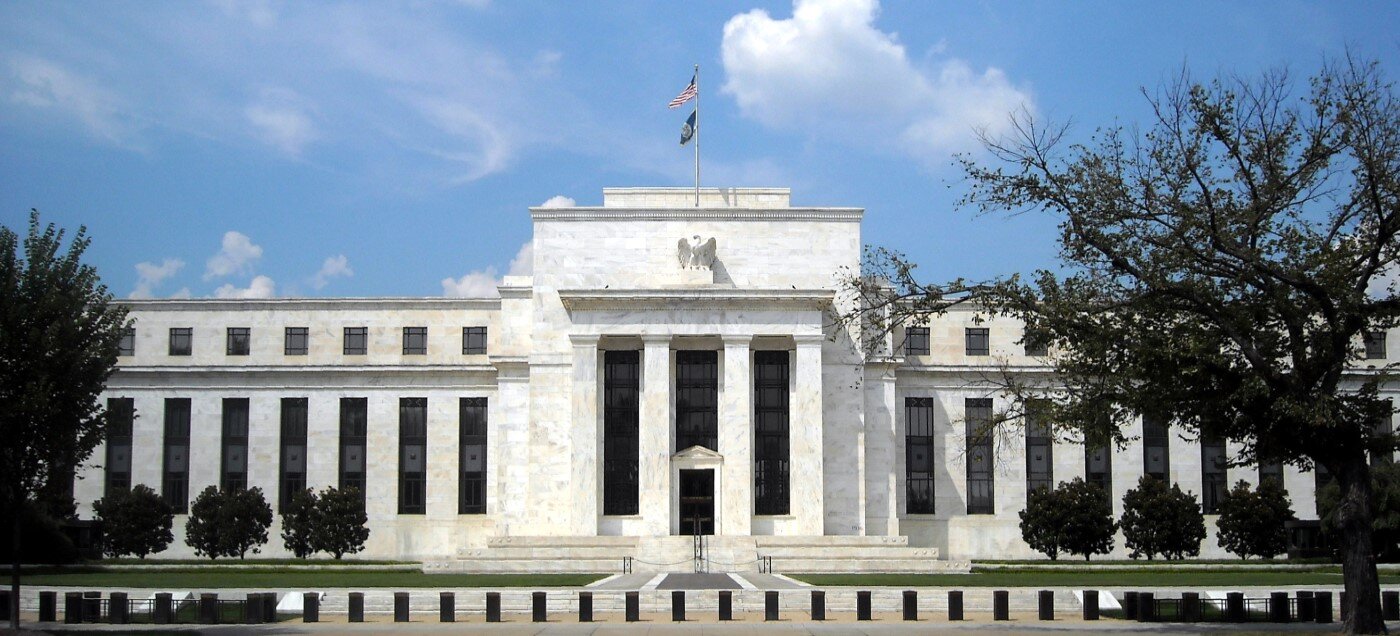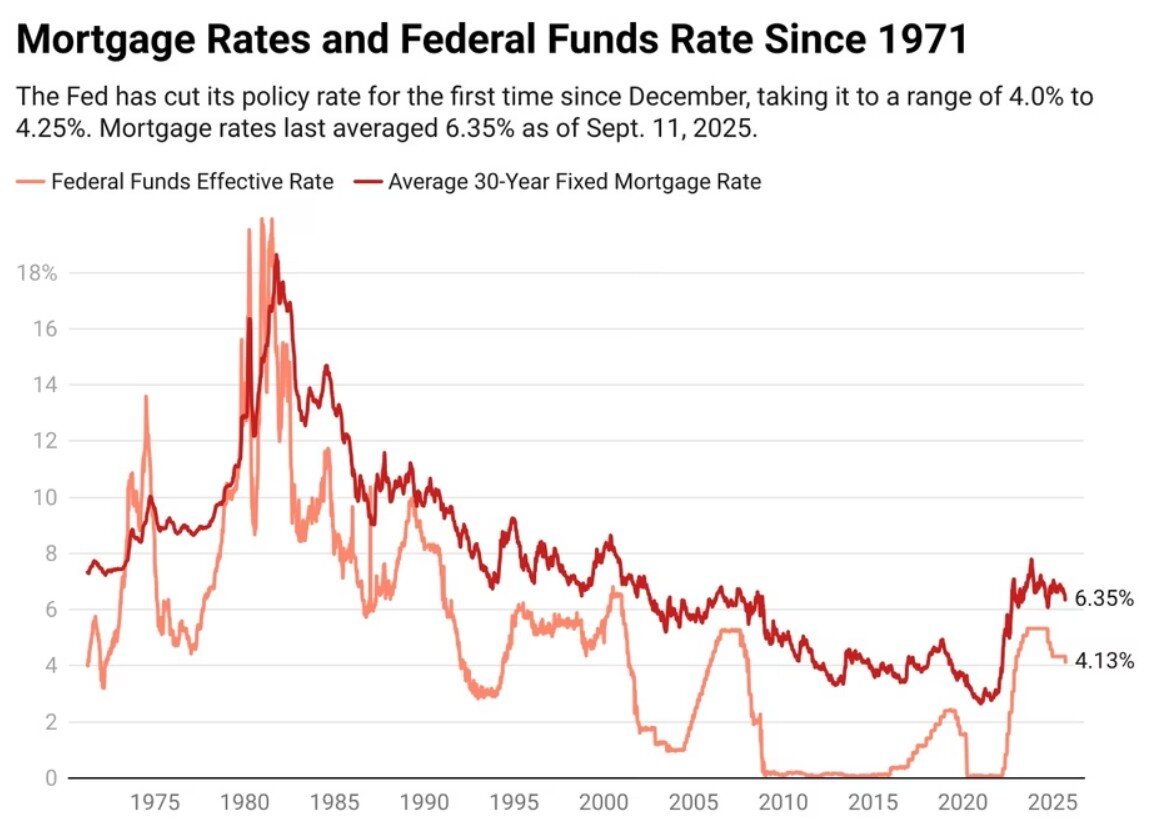Residential Real Estate News

Federal Reserve Delivers First Rate Cut of 2025 as Mortgage Relief Proves Limited
Residential News » Washington D.C. Edition | By Michael Gerrity | September 18, 2025 8:31 AM ET
The Federal Reserve lowered interest rates for the first time in nine months this week, trimming its benchmark federal funds rate by a quarter percentage point to a range of 4% to 4.25%. The widely expected move comes as policymakers seek to ease borrowing costs that have strained households and businesses across the economy.
The decision, backed by Fed Chair Jerome Powell and 11 members of the Federal Open Market Committee (FOMC), was not unanimous. Stephen Miran, President Donald Trump's newly appointed Fed governor who was sworn in just a day earlier, cast the lone dissenting vote, calling for a steeper half-point reduction.
While the federal funds rate doesn't directly set consumer borrowing costs, it influences everything from credit card APRs to auto and small business loans. Mortgage rates are more closely tied to Treasury yields and broader market conditions, but they have already retreated in recent months. The average 30-year fixed mortgage stood at 6.13% as of Sept. 16, down from over 7% in January and near an 11-month low, according to Freddie Mac.
For most homeowners, however, the impact will be muted. Those with fixed-rate mortgages won't see lower payments unless they refinance or move. And housing economists caution that prospective buyers should not expect mortgage rates to fall much further solely because of Wednesday's Fed action. Many analysts expect borrowing costs to remain above 6% through the end of the year.
Markets responded swiftly to the policy shift. The S&P Homebuilders Select Industry Index, a gauge of leading U.S. homebuilder shares, climbed more than 2% on the decision, reflecting optimism that lower financing costs could support housing demand.
Still, the trajectory for mortgage rates -- and the broader economy -- will hinge less on a single quarter-point cut and more on how aggressively the Fed signals its willingness to ease policy in the months ahead.
Sign Up Free | The WPJ Weekly Newsletter
Relevant real estate news.
Actionable market intelligence.
Right to your inbox every week.
Real Estate Listings Showcase
Related News Stories
Residential Real Estate Headlines
- U.S. New-Home Sales Surge in August as Mortgage Rates Ease
- Despite Increased Foreign Buyer Activity, Miami Residential Sales Dip 11 Percent in August
- California Home Sales Enjoy Modest Uptick as Mortgage Rates Ease
- U.S. Home-Flipping Profits Sink to Lowest Level Since 2008 Financial Crisis as Costs Climb
- Why the World's Rich Are Flocking to Europe in 2025
- Federal Reserve Delivers First Rate Cut of 2025 as Mortgage Relief Proves Limited
- Homebuilder Sentiment Holds Steady in U.S. as Rate-Cut Bets Lift Outlook
- U.S. Mortgage Rates Experience Sharpest Weekly Drop in Over a Year
- U.S. Foreclosures Rise for Sixth Straight Month as Affordability Pressures Mount
- Black U.S. Homeownership Rate Falls to Two-Year Low as Job Losses Mount
- Las Vegas Home Prices Flatten as Listings Surge, Sales Slow
- Cooling Miami Housing Market Sees 16 Percent Annual Sales Drop in July
- U.S. Mortgage Delinquencies Uptick in June Amid Regional Pressures
- California, Florida Top U.S. Housing Markets Most at Risk of Downturn
- 30-Year Mortgage Drops to 6.56 Percent in Late August, Lowest Since October 2024
- Investors Maintain Elevated Role in U.S. Housing Market Despite Slight Pullback
- Pending Home Sales Show Mixed Signals as U.S. Buyers Remain Cautious
- Canadian Home Sales Extend Recovery in July
- U.S. Home Sales Rise in July as Buyers Gain More Bargaining Power
- Zombie Foreclosures Edge Up Across U.S.
- 2.6 Million Homes at Wildfire Risk Across 14 Western States in 2025
- One in Five Americans Willing to Trade Personal Safety for Home Affordability
- U.S. Home Price Growth Slows as Affordability Pressures Mount in 2025
- U.S. Mortgage Rates Dip to Four Month Low in Early August
- U.S. Mortgage Applications Rise in Late July, Breaking Four-Week Slump
- Hong Kong's Housing Market Stuck in Stalemate as Bulls and Bears Face Off
- U.S. Condo Market Struggles in 2025
- U.S. Pending Home Sales Remain Sluggish in June
- Los Angeles Area Wildfires Destroyed Nearly $52 Billion in Homes Last January
- Greater Palm Beach Area Residential Sales Slip in June Amid Growing Inventory
- Economic Resilience Lifts U.S. Housing Outlook Going Forward
- New Home Sales Stagnate as Affordability Struggles Continue in America
- U.S. Housing Market Slips in June as Prices Hit New Highs
- Florida, California Continue to Reign Supreme as America's Ultraluxury Housing Markets
- Caribbean Housing Market Evolves into Global Second-Home Hotspot
- U.S. Home Sales See Highest June Cancellation Rate on Record
- Orlando Housing Market Cools in June as Listings Slide, Sales Slow
- Private Credit Surges in 2025 as Real Estate Developers Bypass Banks
- U.S. Condo Market Suffers Sharpest Price Drops in Over a Decade as Buyers Retreat
- Rising Taxes, Insurance Costs Undermine the Stability of U.S. Homeownership








